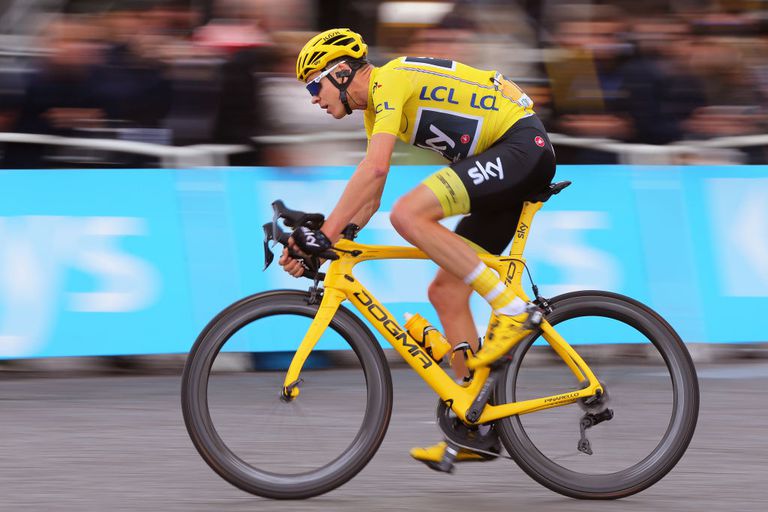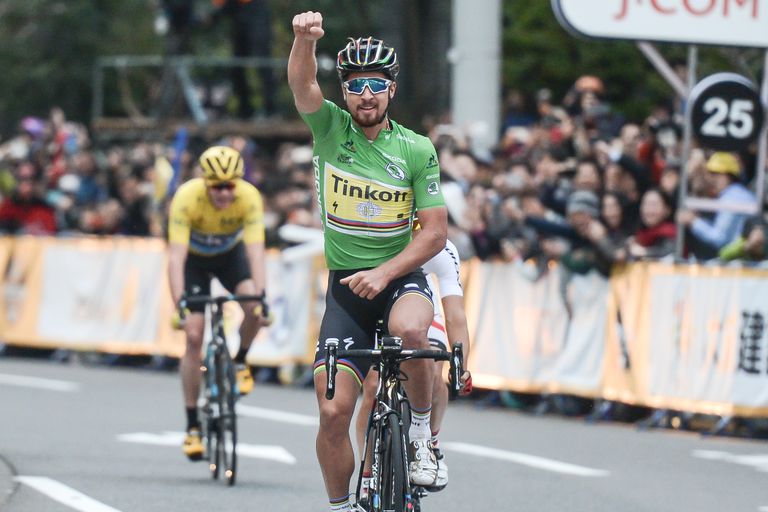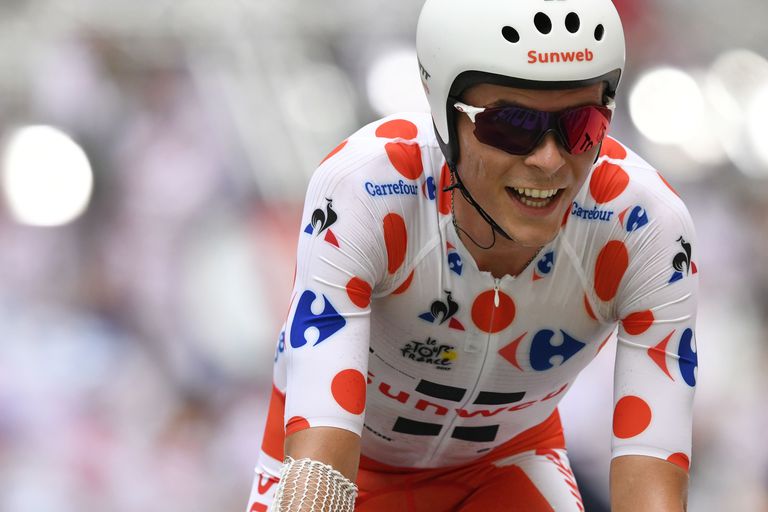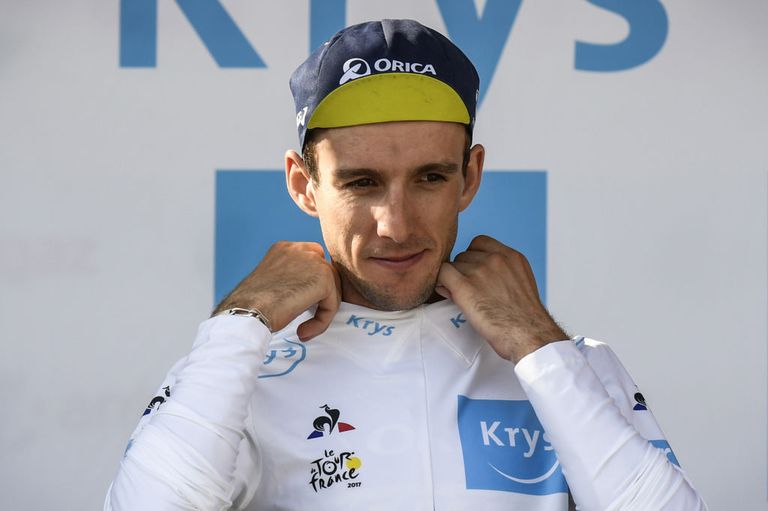What The Tour De France Jerseys Mean
Impress your friends by rattling off the differences between the yellow, green, polka dot, and white jerseys.
There are four important jerseys awarded during the course of the Tour de France each year. Most know about the big one: the yellow race leader’s jersey. But the other three – the green, polka dot, and white jerseys – are also significant, and winning one can be a stepping stone for great things to come for a professional cyclist.
Here’s a simple breakdown of what each of the Tour’s jerseys stands for and what a rider has to do throughout the course of the race to wear it.
Yellow Jersey

For most, the race’s fabled yellow jersey, or maillot jaune, stands above all else. It designates the rider who leads the general classification (GC) and has the fastest overall time. After each stage, the riders’ cumulative times of all previous stages are calculated to determine the overall leader. The yellow jersey is then awarded to the GC leader, and he wears it in the following stage. Because the yellow jersey is based on time not points, a rider who wins the stage may not necessarily win the yellow jersey that day.
Contenders for yellow are well-rounded cyclists and smart tacticians who possess a combination of skills in both climbing and time trialling, but who are also strong enough to hold the pace of the peloton, especially as rival teams work together to drop the leader at every possible opportunity.
Green Jersey

The green jersey, or maillot vert, is worn by the leader of the points classification or the rider who accumulates the most points in the race. Points for the green jersey can be won at intermediate sprints during stages, but most are won at the stage finish line for the top 10 to 25 riders in each stage. The amount of points a rider can earn depends on the stage (whether it’s flat or mountainous, for example) that day.
While the green jersey is known as the “sprinter’s jersey,” the rider who wears it at the final finish line in Paris needs to be well-rounded and consistent. Although most points are traditionally picked up at the finish of the flatter stages, where the sprinters can shine, the competition has also been won by riders who have shown the most consistency, picking up points where they can.
Polka Dot Jersey

The polka dot jersey, also known as the King of the Mountains jersey, is worn by the leader of the mountains classification, or the best climber of the Tour. Points are awarded to the first riders to reach the summit of designated hills and mountains during each stage.
The climbs are categorised from category 1 (most difficult) to category 4 (least difficult). A fifth category, called Hors Categorie or HC, which roughly means above category in French, designates mountains that are so difficult, they are outside of the categorisation. The amount of points awarded depends on the difficulty of each climb. That said, there is a level of subjectivity involved as a climb that is less steep or shorter than others may be categorized as more difficult if it comes at the end of a stage.
The rider in the polka jersey is (of course) a strong climber, often a small, lightweight guy with very high power output. The polka dot jersey competition comes into its own once the race heads into the mountain stages where most points are available.
White Jersey

The white jersey, or maillot blanc, is worn by the leader in the general classification that is 25 years old or under (on January 1 in the year of the race), or put simply: the best young rider with the lowest overall time. For the young, ambitious all-rounders in the race, winning the white jersey is like winning the yellow jersey.
Other Awards
There are two other classifications that are not awarded with a special jersey: the Combativity Award and Team Classification.
Although largely a token prize, winning the Combativity award still gets you a podium appearance once the race finishes on the Champs-Elysées in Paris. After every stage excluding time trials, a panel decides the day’s most aggressive rider. Not necessarily the stage winner, it could be someone who has consistently attacked, instigated a breakaway, or a key player in the stage’s outcome. This rider wears a red race number (instead of black) during the following day’s stage. A Super Combativity award is given on the final stage for the most aggressive rider during the entire Tour.
The Team Classification award is based on the collective time of the three highest-placed riders in the general classification from each team. The three leaders of the team classification wear race numbers that are yellow with black numbers, rather than white with black numbers, and have the option of wearing yellow helmets.
This article originally appeared on bicycling.com.
READ MORE ON: Tour de France tour de france jerseys

